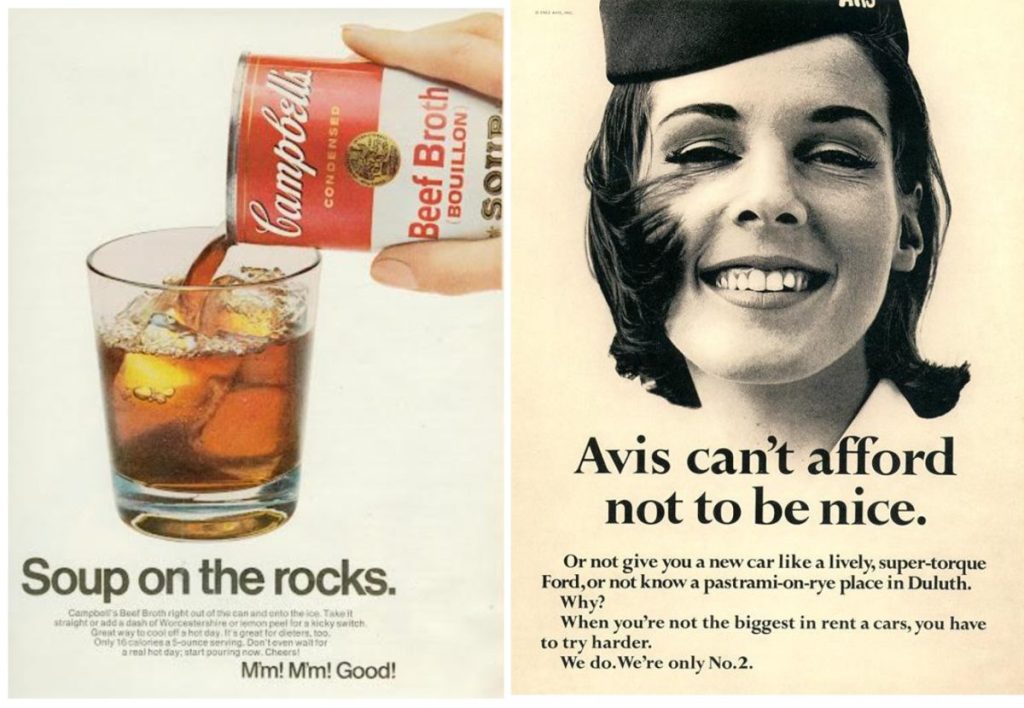Marketing in its purest form is about winning the battle of attention, trust, and preference. It’s about getting people to choose a brand over its substitutes through words and design. It’s a discipline that combines creativity and psychology to create the kind of ads we used to see a lot more on TV, billboards, magazines, and newspapers until Google came along.
Pre-Google marketing
Google might have been the worst thing that ever happened to us marketers.
Before Google, buying a spot for ads was expensive. It was a bet based on circulation and viewing data. I used the word bet because there’s no way to find out if circulation equals eyeball, i.e. we don’t always read the newspapers on our table.
Because it was expensive, we would spend months working creatively, thinking of new ideas to create these ads. The willingness to spend months creating ads is rare these days. Why would we, it’s cheap and quick to test.
Because of Google, marketing transforms into a discipline where A/B tests are the kings and time is the enemy. Creativity becomes an afterthought, often loosely dressed in new logos or website themes without a real strategy.
Marketers are now more obsessed with proving their worth, less so about creating words and designs to influence buying decisions. Why would we, we won’t be able to measure creativity anyway.
Google kills marketing
Because of technology, the role of marketers has clearly evolved into two disciplines.
Unfortunately, the one discipline that most CEOs and CFOs get is the discipline that uses technology to measure and optimize direct results from marketing spending. If I spend an extra hundred dollars in marketing I’ll get two hundred dollars back. This is an easy decision for the business to spend more on marketing. It’s also super sexy to have a predictable growth engine in marketing.
It’s what we call the demand gen people. A critical team because speed is everything in growth. With data, we can get our ads out fast to the right people on the right channel at the right time. We are enabled by technology to make data-first decisions. Make better investments.
The other discipline that’s left is marketing in its purest form. Build a brand that attracts followers. Form a community that believes in your mission. Create ideas that sell and last forever. All that can’t be attributed to spending directly. All that takes time. All that’s not so predictable. Yet, it’s the only proven growth strategy, tested again and again over time.
Think about it. These cult ads from 40-50 years ago would still work today.

Wake the dead: The creators of big ideas that last forever
So who’s doing all the creative work if we’re busy optimizing performance? And here comes the brand people. We are the big idea guys. We build the principles and direction for every piece of content be it a written, video, or sound piece. We are the conductor of an orchestra.
In comparison with the demand gen team, we are friends with time. The best ideas come from going through the idea generation process over weeks. Over here at brand, we run the marathon, not sprints.
Sprints vs marathons
So what I’m saying is that because of the time factor these two teams work on very different pulses. The demand gen team gets a yes or no within a shorter timeframe than the brand team. While the demand gen team is measured by revenue created from marketing campaigns and activities, the brand is reputation management. Sure, the return on brand spend can be measured by brand equity or by tracking trends via brand awareness surveys, brand searches, the share of voice, and the NPS, but it is in reality a long-term investment.
When marketers talk about sales and marketing alignment we are referring to the demand gen discipline, not a brand. The fact that “smarketing” exists says a lot about the pressure for companies to get it right. Why don’t we ever hear about “sengineering”?
The new marketing organization
It’s because of the way we structure our day-to-day and how we are measured, that CMOs are often conflicted. Asking your CMO to do two entirely conflicting jobs – increase brand equity and increase marketing generated revenue – is setting them up for failure. It’s like asking her to train for both sprints and marathons.
That’s why we’ll see the rise of the Chief Brand Officer working alongside the CMO or the CRO. The CBO would run the marathon, while the CMO or the CRO would run the sprints.
That doesn’t mean splitting the marketing team. It is more about putting energy into what we do best. Some marketers are better at working the financial hats, while some are better at the creative hats. We need both sprints and marathons, as Binet and Field found in their studies, to generate that long-term growth.
Marketing’s job is to spread the company vision, which is created by the brand. Because the brand is probably the only asset a company owns, the vision is a unique differentiator and needs to be continuously evaluated against changing market landscape and pushed for further innovations while staying true to its core. And that’s what brand people are here for.
While the CBO is more aligned with the business purpose, the CMO might be more aligned with the revenue team or the CRO.
We might see more CRO hires come from marketing, the creative CMO will transition into the CBO role, while the financial CMO will work alongside the CBO or transition into CRO or even a CGO. And both will fall in love with one another because there will be no battle of credits, no blame game, no guessing game where other people outside marketing wonder what marketing is doing all day. But all very much a team sport.
This way, not only smarketing becomes a dream come true for the CFO and the CEO, the brand people can focus on what really matters in the long run. And it’s only a matter of time before we see this shift happen.
You can’t sprint a marathon
The CEOs who get this now will win not only in the war of talents but of growth. Because brand is the only proven growth strategy, tested again and again over a very long time. Platforms come and go. Ideas last forever. And trust me, marketers cannot be trained to run well in both marathons and sprints.




